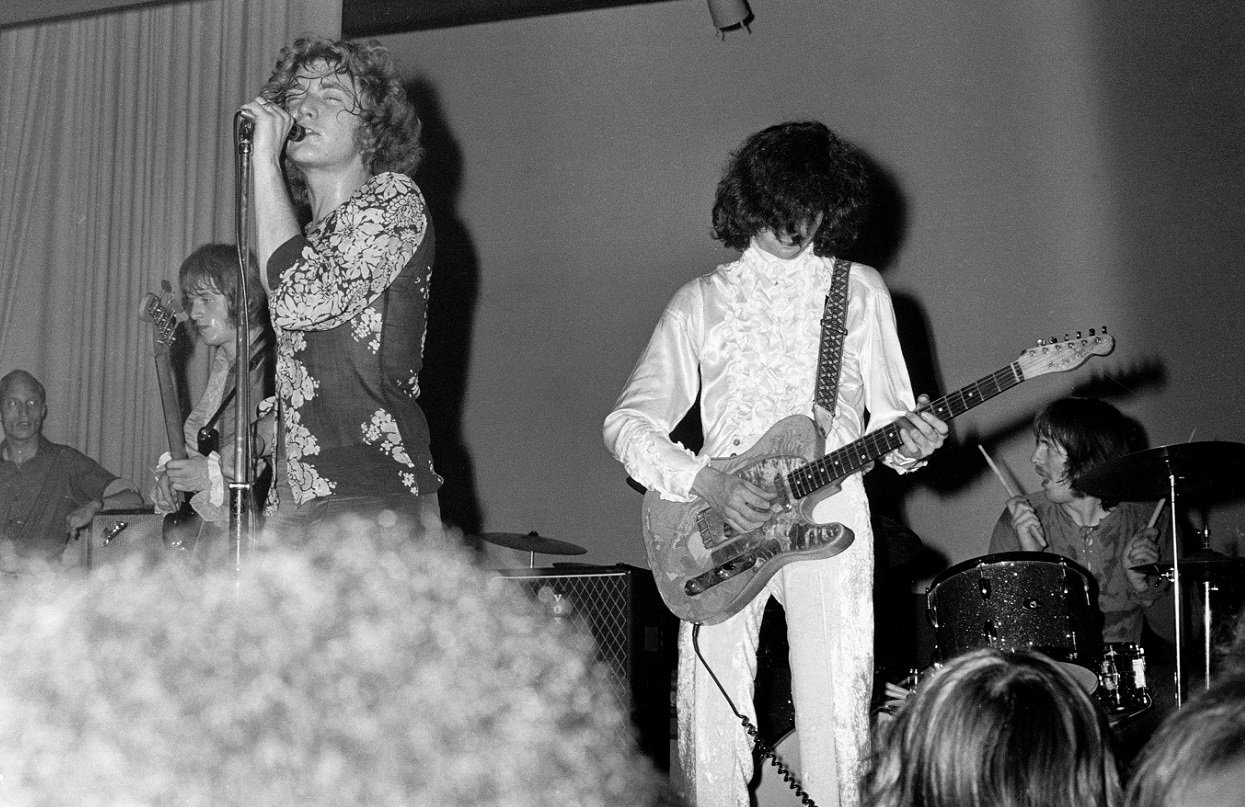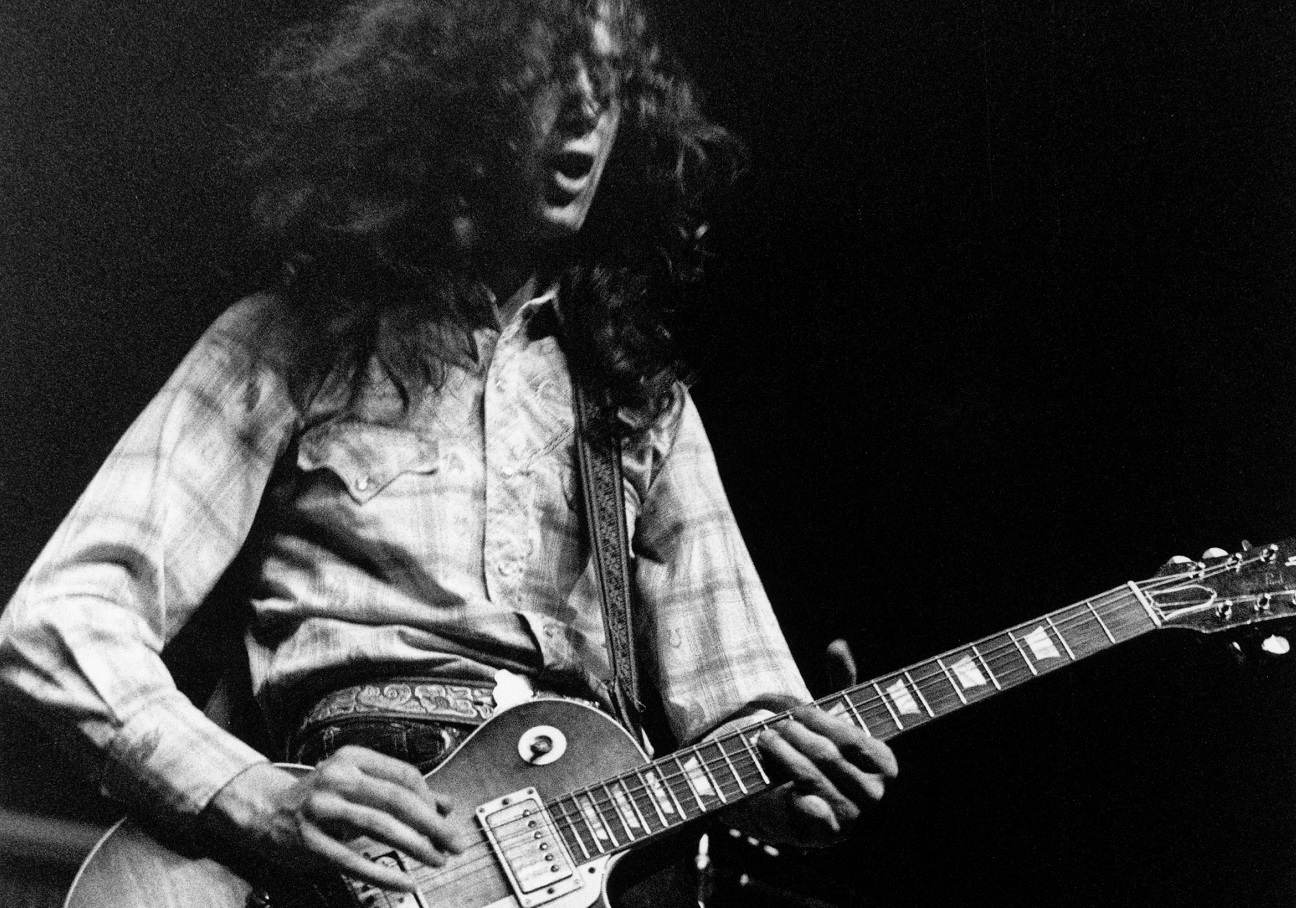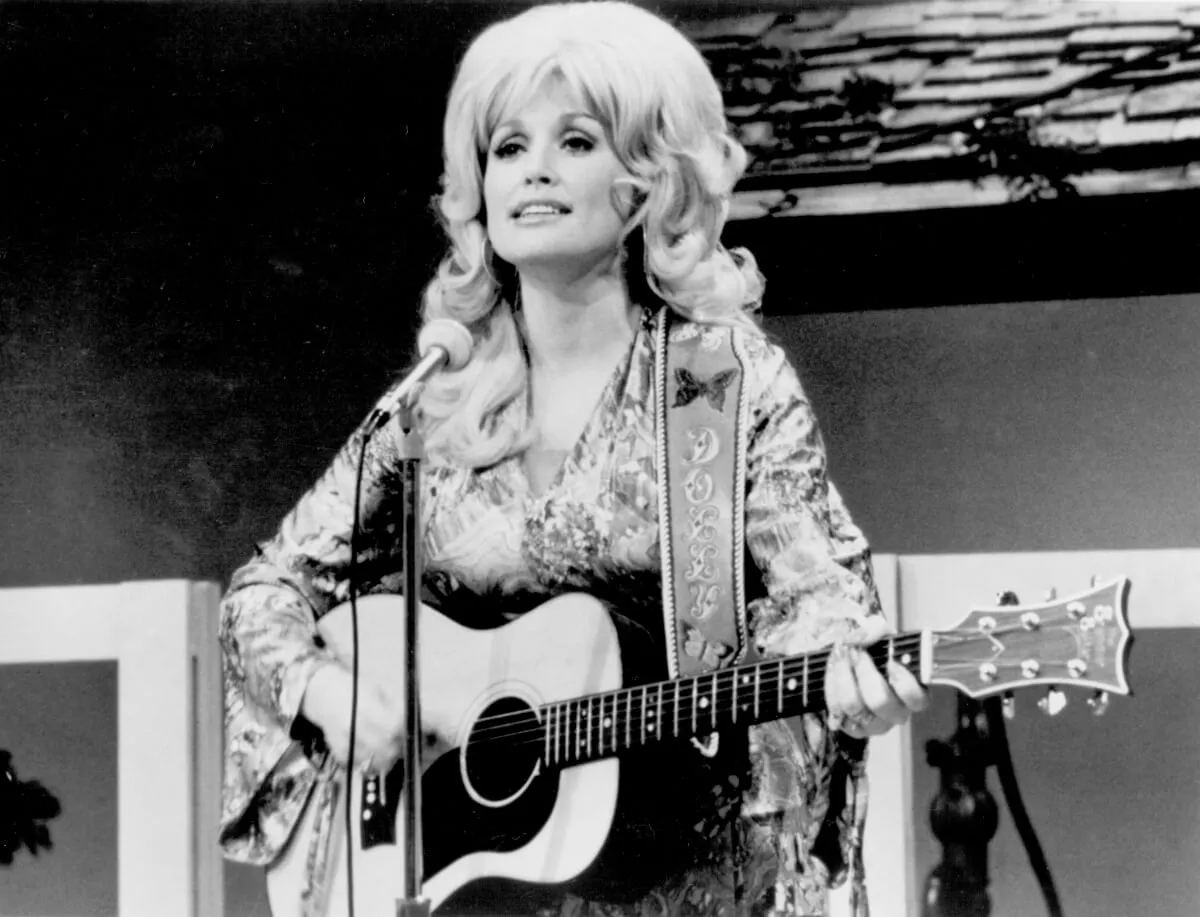How Jimmy Page Got His Incredible Guitar Effect on Led Zeppelin’s ‘Ramble On’
When you look back at the Led Zeppelin discography, “Ramble On” from Led Zeppelin II (1969) stands out among the band’s finer tracks. For one thing, it represents a continuation of Zep’s studies in contrasts, what Jimmy Page referred to as the “light and shade” in the quartet’s music.
After the success of “Babe, I’m Gonna Leave You” on Led Zeppelin (1969), Page wrote an original composition that achieved a similar effect. Following verses backed by Page’s acoustic guitar, the band unleashed the full Zep in the choruses of both tracks.
But “Ramble On” ups the ante on several counts, including the quicker tempo as tapped out by John Bonham. Meanwhile, the track served as a showcase for John Paul Jones, who delivers one of his finest Zep moments on bass.
Add in the powerhouse Robert Plant vocal and it’s clear why “Ramble On” came off so well. Page didn’t stop there, however. The string effect he got on his guitar part after the second verse added yet another unique element to the track.
Jimmy Page brought in a unique guitar effect about halfway through Led Zeppelin’s ‘Ramble On’

“Ramble On” kicks off with a duet of Page and Bonham. As Page unveils the song’s opening theme, Bonham taps the rhythm on an unidentified object. Though it sounds like a bongo, no one has been able to confirm exactly what Bonzo was hitting. (Some have suggested a guitar case.)
Either way, Jones enters the mix on the second turn with a counter-melody on bass. Then Plant floats in with a timeless Zep opening line. “Leaves have fallen all around,” he sings. “Time I was on my way.”
Things hum along, magnificently, with this setup until the end of the verse. That’s when Plant raises his voice. “But now I smell the rain! And with it pain! And it’s heading my way.” That leads to a bridge, followed by the heavy-hitting chorus, which Bonham kicks off using his full drum kit.
After the full Zep unit goes to work on the chorus, “Ramble On” settles back into the second verse. When Plant sings “It’s time to ramble on,” at that verse’s close, Page enters (at 1:47) with a stunning guitar overdub coming through both speakers. It almost sounds like a string instrument.
Page used a custom sustainer made by the effects man who worked with Jimi Hendrix and Jeff Beck

In a 2014 Guitar World interview with Brad Tolinski, Page explained how he pulled off that guitar effect on “Ramble On.” “I used the neck pickup on my Les Paul and backed off on the treble knob on the guitar, and ran it through the sustainer Roger Mayer made for me years before,” Page said.
Mayer, who made Page one of the first fuzz boxes in 1964, was a major force behind the scenes for rock’s great guitarists. In a 2019 interview with Uncut, Page recalled the other box in Mayer’s arsenal: a modulator. Though Page didn’t go for that, Jimi Hendrix did. (He used it on “Purple Haze.”)
Page’s sustainer did the job on “Ramble On.” The Zep legend noted to Tolinski what he had in mind for the overdub. “When I was recording it, I was thinking in terms of making a sound sort of like a string arrangement,” he said. Page clearly pulled that off.


